This isn’t just any ol’ Main Course segment this week. We’re launching something new: an occasional series we’re calling “Menu Mysteries.” In which we check out a restaurant’s menu and have the chef decode some of the lesser known ingredients on it.
For this inaugural outing, Rico went to Wolfdown in Los Angeles — a new restaurant from chef Jason Kim, who also runs the beloved local joint Forage.
NOTE: Before taping the segment, we ran one of these mystery ingredients past our newsletter subscribers. Some of them had heard of it… but many we polled were clueless (among them Rico), so we rolled with it anyway.
It also happened to be in the first menu item Rico asked chef Kim about: A salad featuring granny smith apple, arugula, walnuts, shallots, and…

Mystery Ingredient #1: Gjetost
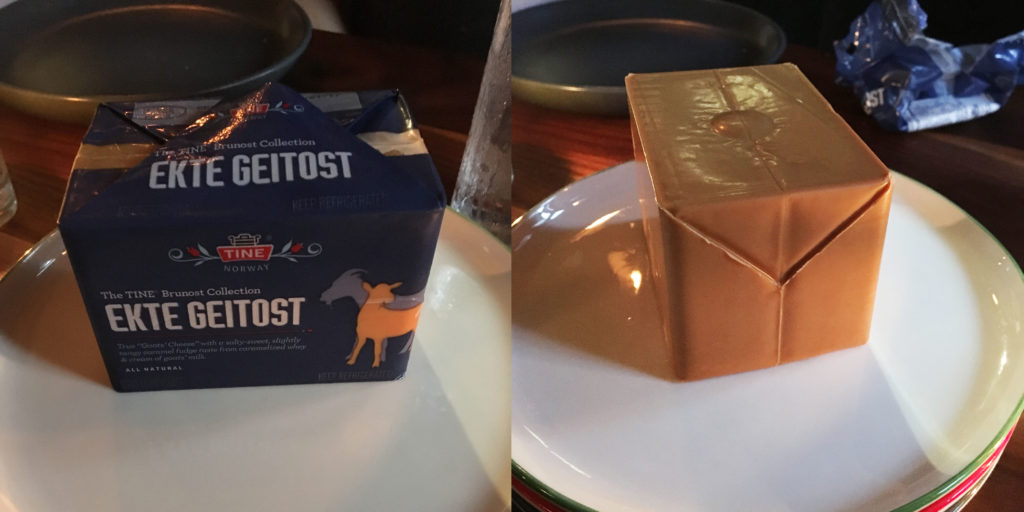
Rico Gagliano: Here’s the stumper: Gjetost [pronounces it like zje TOAST]. Is that how it’s pronounced?
Jason Kim: It’s pronounced YAY-toast. A very festive sounding cheese! It’s a cheese from Norway. “Gje” is, I believe, the word for goat. This is a goat cheese.
When you usually make cheese, you separate the curds and the whey. So what they do is after all the curd is used to make the cheese, the whey, they take it and they keep cooking it down.
Rico Gagliano: What is whey?
Jason Kim: Whey, it’s the by-product when the dairy product, cream, separates. So you get a solid, and then you get the liquid whey form.
And whey… nowadays, you see it in powder form like at nutrition stores. High in protein. But in Norway, what they do is they cook it all the way down until it turns into this brown color. But it’s almost like fudgey, sort of caramel-ey in flavor. Unlike any other cheese I’ve ever had.
A year-and-a-half ago, my friend Lea, who owns an awesome cheese store, she introduced me to this cheese. And I was already working on like a caramel-apple kinda salad, trying to go for that flavor without making it too sweet. Without feeling like you’re eating a dessert.
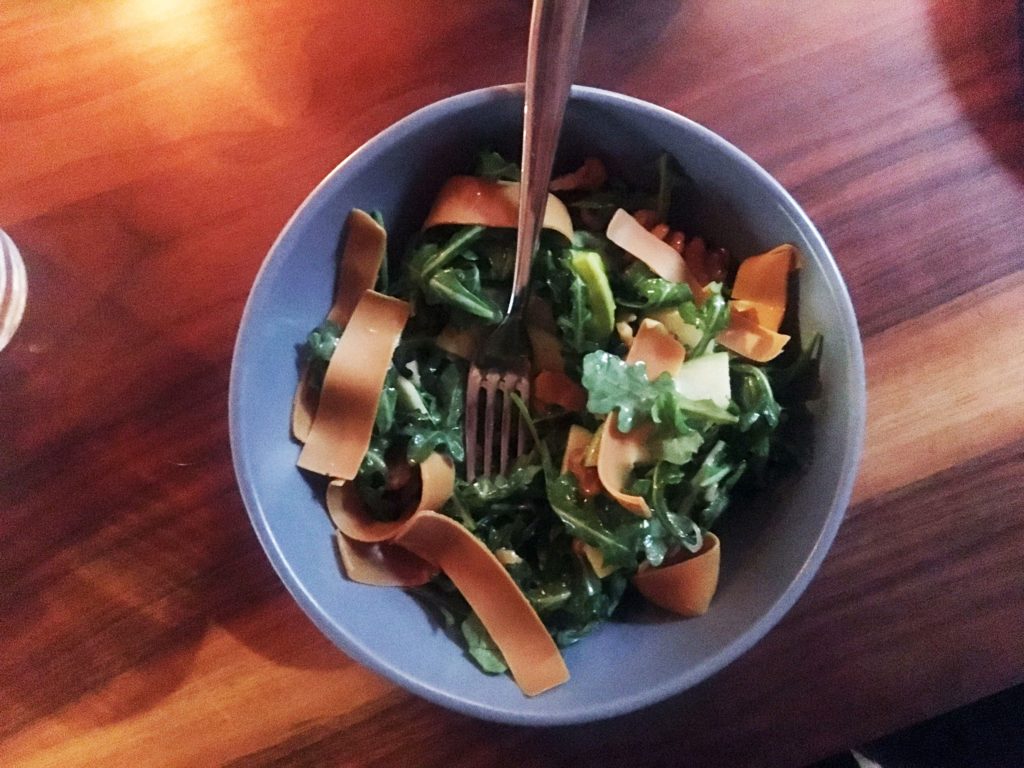
Rico Gagliano: Yeah; at the beginning of the meal you probably don’t wanna have a dessert. This kinda brings up the question, though: Chefs in a way are artists, right? But do you have to go so far afield to a Norwegian cheese by-product to get what you’re going for in your mind?
Jason Kim: It’s not like I tried to search for this cheese, it’s almost like the cheese kinda found me. I walked into the store and Lea just said, “You have to try this cheese,” and on the spot I was like, “This is the final element.”
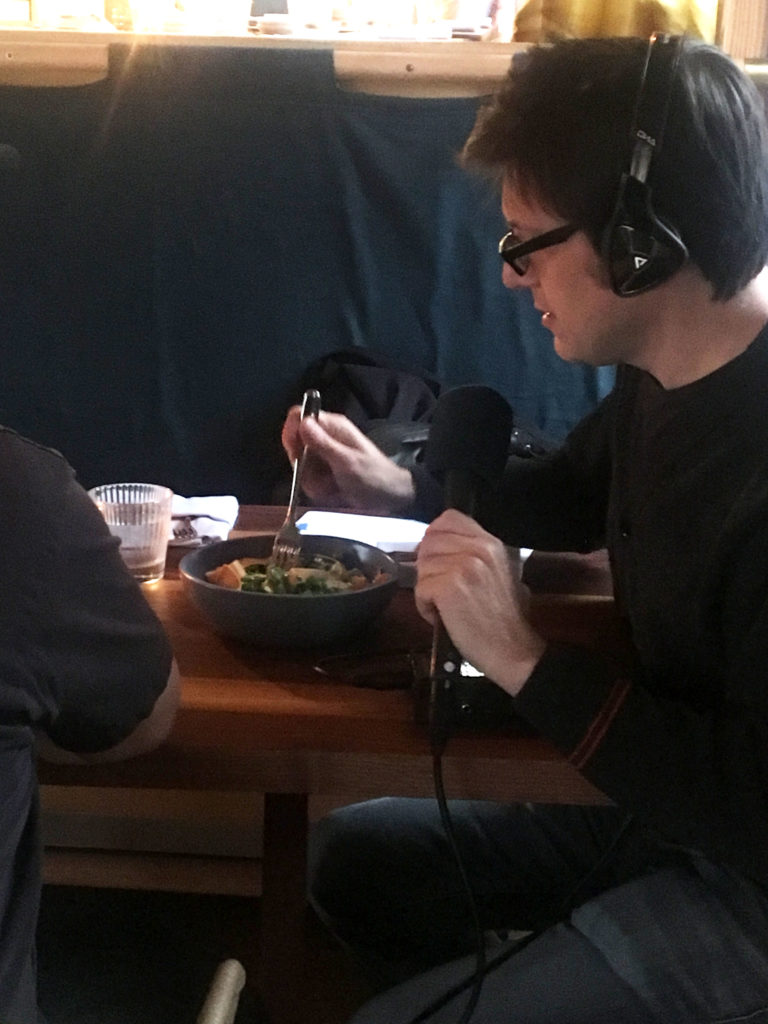
Rico Gagliano: All right, let me take a taste of this. And it’s really beautiful. There are nice little arugula leaves and little chunks of apple, and I guess this is the gjetost [mispronounces the cheese] on top. Sorry, this is the gjetost [pronounces it correctly] on top.
I almost don’t wanna say “yay toast,” it sounds like something a child would say!
Jason Kim: You know what — the first few times everybody was kinda hesitant to say it. But now it’s kinda become a joke, and every time this salad gets fired, we yell “Yay toast!”
Rico Gagliano: Well if nothing else, it’s built some esprit de corps around here. Here’s a bite. [Tastes the salad.] Oh yeah. I do taste the sweetness, it’s very sweet. It only kind of turns into a cheese flavor on my palate after I’ve chewed it a little bit. This might be a really good way to get kids into eating salad.
Jason Kim: Yeah, yeah. Candy salads! That’s what we’re going for.
Mystery Ingredient #2: Skordalia
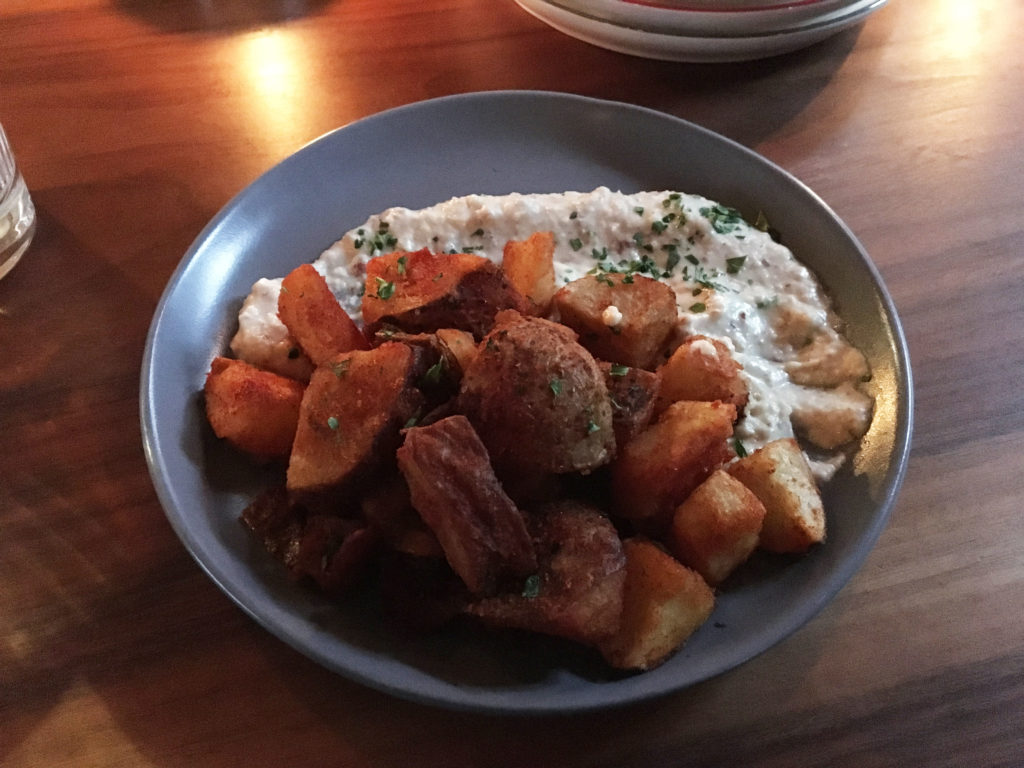
Rico Gagliano: Well, before I ruin my dinner with salad, let’s move onto the next thing. This is… what are we looking at here?
Jason Kim: OK, this is our patatas bravas.
Rico Gagliano: And on the menu, it says crispy russet potato, paprika… and skordalia. That is s-k-o-r-d-a-l-i-a.
I will tell you that when I first heard that I thought maybe it was a flower or something? And again, “s-k-o” also sounds kind of Nordic to me somehow.
Jason Kim: Actually, the skordalia is Greek in origin. A Greek condiment. It’s made with old bread, garlic, lemon juice, almonds and potato. Almost like a garlic paste/sauce kinda thing.
Rico Gagliano: I’m looking at the plate right now — so that is this arc of creaminess around the edge of the plate?
Jason Kim: That’s the skordalia. So this dish, this is pretty much our glorified French fries. But we wanted to present it with something else that, I guess, people are not used to having, rather than doing ketchup or aioli or something like that.
Rico Gagliano: Could you not, though, just do a garlic sauce? What is this gonna give you that your typical garlic sauce won’t?
Jason Kim: This sauce actually kinda has some sentimental value to me. Because when I first started cooking, one of my first paid jobs, I worked at a Greek restaurant. And this is one of the first things that I cooked, and I was kinda like, “Wow, this is amazing! It’s cool something like this exists!“
Rico Gagliano: What about it is so appealing to you?
Jason Kim: I mean, first of all, I’m Korean, and I eat insane amounts of garlic. We eat raw garlic. I mean, garlic is in everything in Korean food. And most of my training has been in French cooking. And French cooking is like… you never put too much garlic. You always hold back on the garlic. You don’t wanna taste any raw garlic. And that goes against everything I grew up and, like, learned to love.
So when I started working at this Greek restaurant and I tasted this, I was just like, “OK, these guys understand! These guys know!” So this is one of the first things that I learned to make at a restaurant that really spoke to me and it made me feel like, “Oh OK — so I don’t have to hold back my garlic.”
Rico Gagliano: You can express your garlicky soul.
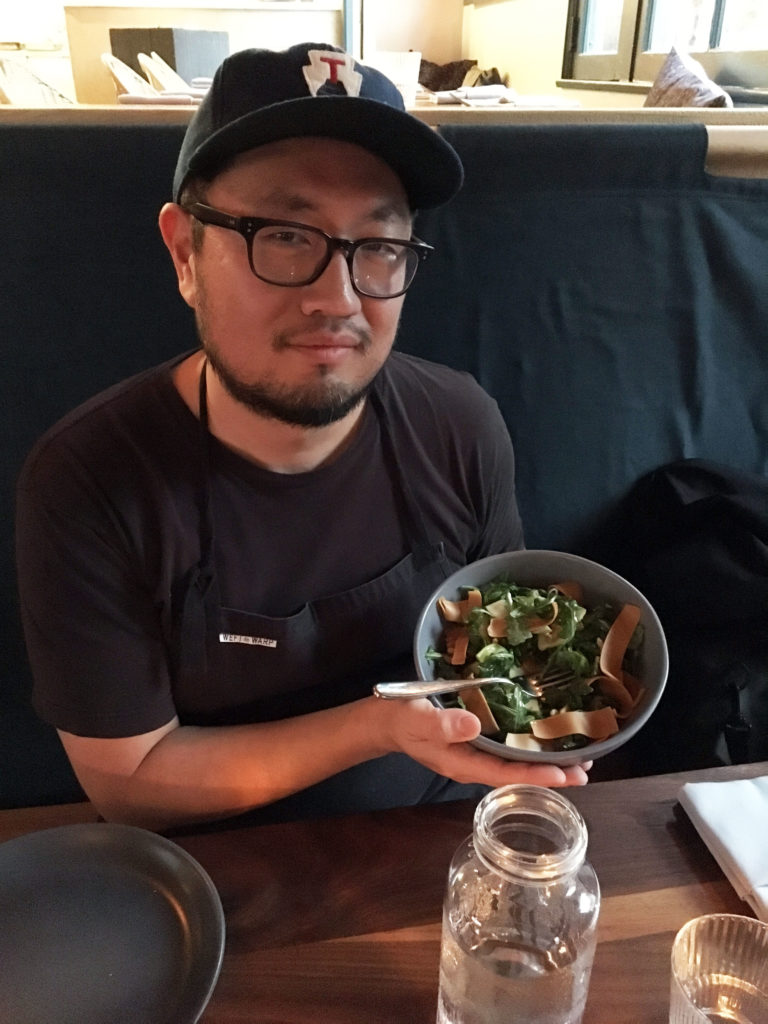
Jason Kim: Exactly. So, that’s one of the reasons why I chose this.
Rico Gagliano: All right, I’m gonna take a bite. Nothing fancy about this, I’m just stabbing a delicious-looking golden fried chunk of potato and dipping it in this skordalia. [Tastes the dish.] Oh that’s lovely. And it’s a lot mi… oh! [laughs] I was about to say —
Jason Kim: It kicks in a little bit after.
Rico Gagliano: I was gonna say it’s milder than a garlic sauce. But that’s not true at all!
Jason Kim: No.


